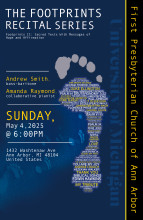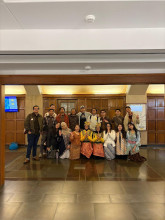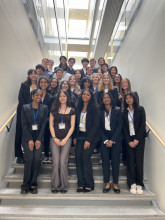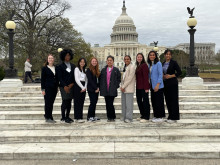Andrew Smith
Posts tagged with Mini Grants
Showing 1 - 10 of 14 items

The project that I created was for my dissertation recital series called Footprints.

We partnered with the U-M Library to help us find accessible foraging books and guides, as well as guides for facilitating inherently non-hierarchical spaces.

The Indonesian Cultural Night (ICN) 2025, hosted by the Indonesian Students Association at the University of Michigan (ISA-UM) was truly a night to remember.

On Monday, August 26th, the first day of fall classes, the University of Michigan campus buzzed with excitement.

"Where do I belong?" This question lingered in my mind long after my conversations with Sisi, a 21-year-old Chinese-Spanish student at Universitat Pompeu Fabra (UPF).

My research addresses barriers to accessing treatment for opioid use disorder (OUD) among women in Punjab, India.

The Initiative Team through M-HEAL details their process of creating portable, inexpensive, and safe bassinets that are able to incubate newborns. Through feedback from medical personnel and library staff, they are able to improve future versions of the bassinet and its associated baby carrier to combat neonatal hypothermia.
The 19th Annual Multicultural Greek Exhibition (MGX) was founded by the sisters of Lambda Theta Alpha Latin Sorority. MGX combats negative stigmas of Greek Life by illustrating that Greeks are involved in tradition, community service, philanthropy, and diversity and unity.

On April 2nd, 2025, ten delegates from the University of Michigan's Society of Women Engineers (SWE) chapter traveled to Washington, D.C., to participate in SWE’s annual Congressional Outreach Day. Through representing the voices of countless women and marginalized individuals who are often excluded from governmental conversations, U-M SWE members endorsed a targeted list of federal legislative priorities and funding requests to ensure the success of marginalized groups working in STEM.

Krystel Anderson, a Seed Library Engagement Fellow, illustrates her experience in community-facing work, which included providing seeds to the community and accessible knowledge of plants and gardens.